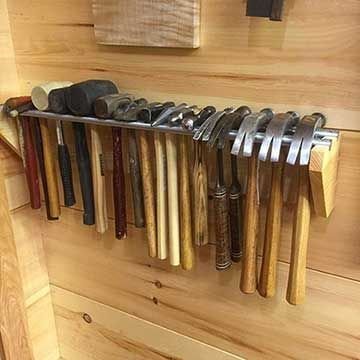Woodworking is a meticulous craft that requires careful planning and preparation to achieve successful outcomes. Whether you’re a seasoned woodworker or just starting out, having a well-crafted woodworking plan is essential for the success of your project. In this article, we will guide you through the process of drawing a woodworking plan, providing step-by-step instructions and valuable tips along the way.
Having a woodworking plan serves as your roadmap throughout the project, ensuring that you stay on track and achieve the desired results. It not only helps you visualize the final product but also allows you to anticipate and address any potential challenges that may arise during construction. By following a precise plan, you can save time, effort, and materials by avoiding unnecessary mistakes or rework.
In this comprehensive guide, we will cover everything you need to know about drawing a woodworking plan. We will dive into understanding the basics of creating a plan, including step-by-step instructions on how to get started. We will also explore the essential tools you will need to gather before diving into the planning process. Additionally, we’ll discuss techniques for accurately measuring and sketching to ensure clear drawings with accurate measurements.
- Drawing a woodworking plan is an art in itself – it involves not only technical skills but also considerations for aesthetics and functionality. Throughout this article, we will delve into design considerations and how to incorporate them into your plan effectively. Moreover, we’ll guide you in creating a comprehensive material list for your project and mapping out different types of joinery that can be incorporated into your plan.
- Join us as we go beyond the art of drawing lines on paper – we’ll show you how to add detail to your plan with diagrams, dimensions, and annotations that make it easier to follow during construction. And finally, we’ll help you troubleshoot challenges that may arise during the planning phase and guide you through the revision process to fine-tune your woodworking plan.
Stay tuned for everything you need to know to create a well-crafted woodworking plan that will set you up for greater success in your project.
Understanding the Basics
Whether you are a beginner or an experienced woodworker, understanding the basics of drawing a woodworking plan is crucial for the success of your project. This section will guide you through a step-by-step process on how to start creating a detailed woodworking plan.
Gaining Inspiration and Gathering Ideas
Before you begin drawing your woodworking plan, it is important to have a clear idea of what you want to build. Start by browsing through design magazines, online platforms, or even visiting furniture stores to gain inspiration and gather ideas. Take note of the elements that appeal to you and consider how they can be incorporated into your own project.
Determining Project Specifications
Once you have gathered ideas, it’s time to determine the specifications of your project. Consider factors such as the purpose of the piece, its dimensions, and any specific functionalities or features you would like to include. This step will help you establish the foundation for your woodworking plan.
Creating Sketches and Drawings
With your specifications in mind, it’s time to start sketching out your woodworking plan on paper or using digital design software. Begin with rough sketches, focusing on capturing the overall shape and structure of the piece. As you progress, refine these sketches into more detailed drawings that include precise measurements and proportions.
Adding Labels and Annotations
To ensure clarity in your woodworking plan, remember to add labels and annotations to your drawings. These notes should provide additional information about each component and may include details such as dimensions or specific instructions for assembly.
By following this step-by-step guide, you will be well-equipped to begin drawing your own woodworking plans confidently. Remember that patience and attention to detail are essential throughout this process, as they contribute greatly to the success of your final project.
Gathering the Essential Tools
Creating a woodworking plan requires more than just a pencil and paper. To begin creating a detailed woodworking plan, you will need to gather a few essential tools. These tools will not only aid in the accuracy and precision of your plan but also help streamline the entire process.
First and foremost, you’ll need a reliable measuring tape or ruler. Accurate measurements are crucial in woodworking, as even the slightest miscalculation can lead to costly mistakes. A measuring tape with both standard and metric measurements will provide versatility for different projects.
Next, you’ll need quality drawing tools such as drafting pencils or mechanical pencils with varying lead thicknesses. These types of pencils allow for precise lines and shading, making it easier to create detailed drawings. Additionally, having an eraser on hand is essential for correcting any mistakes or changes in your plan.
In addition to drawing tools, consider investing in a good set of drafting templates or stencils. These templates are pre-designed shapes commonly used in woodworking plans, such as circles, squares, triangles, and curves. Using these templates will save you time and effort by ensuring consistent and accurate shapes throughout your plan.
Lastly, having access to technology can greatly enhance your woodworking planning process. While traditional methods like pencil and paper still have their place, using computer-aided design (CAD) software can offer more flexibility and precision. CAD software allows you to create digital versions of your woodworking plans with ease and make revisions effortlessly.
Gathering these essential tools before starting to draw your woodworking plan will set you up for success from the beginning. Having the right measuring tools, drawing instruments, drafting templates or stencils, and possibly utilizing CAD software if available will ensure that your plan is accurate, detailed, and cohesive.
| Tool | Description |
|---|---|
| Measuring Tape | A flexible tape measure used to take precise measurements in both standard and metric units. |
| Drafting Pencils | Pencils with varying lead thickness that allow for precise lines and shading in woodworking plan drawings. |
| Eraser | An eraser used to correct mistakes or make changes in the woodworking plan. |
| Drafting Templates/Stencils | Pre-designed shapes commonly used in woodworking plans, such as circles, squares, triangles, and curves. |
| CAD Software | Computer-aided design software that allows for the creation of digital versions of woodworking plans with precision and ease. |
Measuring and Sketching
Measuring for Accuracy
One of the most crucial steps in drawing a woodworking plan is ensuring that your measurements are accurate. This will help you avoid mistakes and ensure that your final project turns out as planned. To achieve accurate measurements, it is important to use the right tools and techniques.
Firstly, invest in a good quality tape measure that has clear markings and a reliable locking mechanism. This will help you take precise measurements without any slippage or misalignment. Additionally, using a combination square can aid in measuring angles and ensuring straight lines.
When measuring dimensions, be sure to measure twice or even thrice to double-check your accuracy. Also, make sure to measure from the correct reference points, such as edges or corners, to prevent any inconsistencies. It is also beneficial to use fractions instead of decimals when recording measurements to maintain precision.
Sketching for Clarity
Once you have gathered accurate measurements, it is time to transfer them onto paper by sketching your woodworking plan. Creating clear and detailed sketches will help you visualize the final result and understand how different pieces fit together.
Start by drawing an overall view of the project from different angles to get a comprehensive understanding of its shape and size. Use simple shapes like rectangles or circles to represent each component accurately. Ensure that these initial sketches are proportionate and reflect the exact dimensions obtained through earlier measurements.
As you progress with your sketches, add more detail by including cross-sections or exploded views, depending on the complexity of your project. These additional drawings can provide clearer information about joinery techniques and how individual pieces come together.
Remember to label each part with dimensions which should correspond with those taken during the measurement process. Clear labels make it easier for others – such as woodworkers who may assist you or read your plans later – to follow along and understand your design intentions.
By employing these techniques for accurate measuring and clear sketching, you can ensure that your woodworking plan is detailed and easy to comprehend, setting yourself up for a successful project execution.
Design Considerations
When creating a woodworking plan, it is crucial to consider both aesthetics and functionality. A well-designed project not only looks beautiful but also serves its purpose effectively. In this section, we will explore how to incorporate these important considerations into your woodworking plan.
One of the first design considerations to keep in mind is the overall style of your project. Are you going for a modern look, a rustic feel, or something more traditional? By identifying the style you want to achieve, you can make design choices that align with that aesthetic. Consider elements such as the type of wood, the shape of the piece, and any decorative details or embellishments.
Another essential aspect to consider is functionality. Think about how your woodworking project will be used and what specific features it needs to have. For example, if you are building a desk, think about incorporating drawers or compartments for storage. If you are constructing a shelf, consider the weight it needs to hold and ensure that it has sufficient support.
In addition to aesthetics and functionality, it is also important to take into account any special requirements or limitations that may exist for your project. This could include factors such as space constraints or specific user needs. By considering these factors early on in the design process, you can avoid potential issues down the line.
Overall, designing a woodworking plan that successfully incorporates aesthetics and functionality requires thoughtful consideration and planning. Taking the time to think through these aspects will ensure that your final project not only looks stunning but also meets its intended purpose effectively.
| Design Considerations | Incorporating Aesthetics And Functionality Into Your Woodworking Plan |
|---|---|
| Aesthetics | – Identify desired style\n – Choose appropriate wood type\n – Consider decorative details |
| Functionality | – Determine how the project will be used\n – Incorporate necessary features (e.g., storage, support)\n – Account for any special requirements or limitations |
| Special Requirements/Limitations | – Consider space constraints\n – Cater to specific user needs |
Creating a Material List
Once you have a clear vision of your woodworking project and have sketched out the design, it’s time to create a material list. A well-prepared material list serves as a roadmap for gathering all the necessary supplies and ensures that you have everything you need before starting your project. This section will guide you through the process of creating a comprehensive material list for your woodworking plan.
To begin, take a careful look at your sketch and note down all the different components and parts required for your project. Consider the type of wood needed, its dimensions, and any additional materials such as screws, nails, or adhesives. It’s important to be precise in identifying each item to avoid any last-minute surprises during the construction process.
Next, take accurate measurements of each component and refer to your sketch to determine the quantity needed. This may involve calculating the lengths of wood pieces or determining quantities based on how many sections need to be constructed. Be sure to account for any extra materials needed due to mistakes or waste.
Researching prices and availability is also crucial at this stage. Check with local suppliers or search online to determine where you can source your materials at reasonable prices. Consider factors such as quality, cost-effectiveness, and delivery options when making your decisions.
Remember that having a comprehensive material list not only helps with efficient planning but also allows you to budget accurately for your project and ensure that there are no unexpected delays due to missing supplies. Take your time in this step; double-checking quantities and verifying that you have accounted for every single item will save you time and frustration later on.
Mapping Out the Joinery
When creating a woodworking plan, one crucial aspect to consider is the joinery. Joinery refers to the method of connecting different pieces of wood together to form a sturdy and functional structure. There are various types of joints that you can choose from, each with its own strengths and weaknesses. Understanding the different joint options and knowing how to incorporate them into your plan will help ensure the durability and longevity of your woodworking project.
One common type of joint is the butt joint, which involves joining two pieces of wood at their ends or edges. While this joint is simple to create, it doesn’t provide much strength on its own and may require reinforcement with screws or nails.
Another option is the mortise and tenon joint, which involves cutting a rectangular slot (mortise) in one piece of wood and fitting a projecting piece (tenon) from another piece into the slot. This type of joint is well-known for its strength and stability.
Dovetail joints are another popular choice among woodworkers due to their strength and aesthetic appeal. These joints feature interlocking tails on one piece of wood, which fit into corresponding pins on another piece. Dovetail joints are commonly used in drawer construction because they provide excellent resistance to pulling forces.
Additionally, there are other more advanced joints such as finger joints, dado joints, and lap joints that can be used depending on your project’s specific needs. It is important to research each type thoroughly before deciding which one best suits your project.
To incorporate these joints into your woodworking plan effectively, it is essential to designate clear measurements and dimensions for each joint. Consider labeling each joint and specifying the technique required for its creation. Including detailed diagrams, dimensions, annotations, or even step-by-step instructions will make it easier for both yourself as the creator and others who may refer to your plan.
Remember, the joinery you choose will greatly impact the overall strength and durability of your project. By exploring different joint options and carefully incorporating them into your woodworking plan, you can ensure that your finished piece not only looks visually appealing but also stands the test of time.
Adding Detail
Once you have the basic design and measurements in place, it’s time to add more detail to your woodworking plan. This involves enhancing your plan with diagrams, dimensions, and annotations to ensure clear communication and accurate execution of your project. Here are some helpful tips on how to effectively add detail to your woodworking plan:
- Diagrams: Including visual representations such as diagrams can greatly enhance the clarity of your woodworking plan. Use simple, labeled line drawings or CAD software to create diagrams that illustrate different aspects of your project. For example, you can create a diagram showing the assembly process, highlighting the order in which different components should be joined together.
- Dimensions: Accurate dimensions are crucial when it comes to transforming a plan into reality. Clearly indicate the measurements for each part of your project, including length, width, height, and any other relevant dimensions. Use arrows and lines with corresponding numbers to make it easy for anyone following your plan to understand the sizes involved.
- Annotations: Adding annotations can provide additional information and instructions that might not be immediately apparent from the diagrams or dimensions alone. Annotations can include notes on specific techniques or tips for construction, as well as reminders for safety precautions or recommended tools and materials.
To present your detailed woodworking plan in an organized manner, consider using HTML ordered or unordered lists:
- Use numbered lists for parts that need to be assembled in a specific order.
- Create bullet-pointed lists for tools and materials required in various stages of construction.
- For additional tips or insights you want to highlight within the text of your plan but don’t necessarily need as separate steps or sections, use nested bullet-pointed lists.
Adding detail through diagrams, dimensions, and annotations is an important step towards ensuring that your woodworking project is executed correctly. These visual aids not only assist you during construction but also enable others who may be working on the project to understand your vision accurately and bring it to life effectively. Remember, the more clarity you provide in your plan, the smoother the execution of your woodworking project will be.
Troubleshooting and Revisions
In the process of creating a woodworking plan, it is not uncommon to encounter challenges and unexpected obstacles. This section will provide valuable guidance on how to troubleshoot common issues and make necessary revisions to your woodworking plan.
One common challenge that woodworkers may face is fitting all the desired elements into the available space. You may find that certain design features or dimensions are not feasible or practical once you start putting your plan into action. In such cases, it is important to revisit your initial design considerations and make revisions accordingly. Consider prioritizing functionality over aesthetics if space constraints become an issue.
Another challenge that often arises during the woodworking planning process is aligning joints correctly. Misaligned joints can compromise the structural integrity of your project and adversely affect its overall appearance. To address this, take the time to carefully measure and mark each joint’s placement before executing them. Additionally, consider using specialized tools such as doweling jigs or routers with guide bushings to ensure precise joint alignment.
As you progress with your woodworking project, it is essential to regularly review your plan for any errors or inconsistencies. It is not uncommon for mistakes or oversights to occur during the drawing process. These can range from inaccurate measurements or incorrect proportions to missing dimensions or annotations. By paying attention to detail and conducting periodic reviews, you can identify any potential issues early on and make necessary revisions before they become problematic during construction.
Conclusion
A well-crafted woodworking plan is essential for the success of your project. It provides a roadmap, ensuring that you stay organized and focused throughout the entire process. By following a detailed plan, you can avoid costly mistakes and setbacks, ultimately saving both time and money.
One of the key benefits of having a woodworking plan is that it allows you to visualize the end result before you even start cutting the wood. It gives you an opportunity to consider various design options and make changes as needed. A good plan will not only incorporate aesthetics but also functionality, ensuring that your finished project aligns with your needs and expectations.
Another crucial aspect of a woodworking plan is accurate measurements and clear drawings. This ensures that every component fits together seamlessly, resulting in a structurally sound and visually appealing piece. By taking the time to measure accurately and sketch out your design with precision, you can eliminate any guesswork or potential errors.
Additionally, creating a material list helps you stay organized and ensures that you have all the necessary supplies before starting your project. This saves you from unexpected trips to the hardware store or delays due to missing materials.
Incorporating different types of joints into your plan is also essential for the overall strength and durability of your project. Understanding how each joint works allows you to choose the right one for each connection point, ensuring optimal stability.
Finally, enhancing your woodworking plan with diagrams, dimensions, and annotations provides clarity for anyone who may refer to it in the future. It serves as a valuable reference guide during construction or if revisions are needed down the line.
In conclusion, investing time in creating a well-crafted woodworking plan is vital for the success of your project. By understanding the basics, gathering essential tools, measuring accurately, considering design elements, creating a material list, mapping out joinery techniques, adding detail through diagrams and annotations, troubleshooting challenges along the way, and making necessary revisions – you set yourself up for success. With a clear plan in hand, you can confidently embark on your woodworking journey and achieve the results you desire.
Frequently Asked Questions
How do you draft a woodworking project?
Drafting a woodworking project involves several steps to ensure a well-planned and successful outcome. Firstly, the project idea or design is visualized and sketched on paper or using computer software. This initial sketch should include the overall dimensions, proportions, and major components of the project. Next, detailed measurements are taken to determine precise dimensions for each component.
These measurements are translated onto a more accurate scale drawing, which can be created using drafting tools or computer software. Depending on the complexity of the project, additional drawings may be necessary to illustrate joinery techniques or assembly steps. The final step in drafting is reviewing the drawings for any errors or inconsistencies before proceeding with construction.
Is SketchUp good for woodworking?
SketchUp is indeed an excellent tool for woodworking projects. It is user-friendly 3D modeling software that allows woodworkers to create accurate and detailed digital representations of their projects before beginning construction. With SketchUp’s extensive library of pre-made components and textures specifically designed for woodworking, users can easily incorporate common elements such as boards, joints, and hardware into their designs.
Additionally, SketchUp’s intuitive interface makes it relatively simple for beginners to learn and navigate through the software. By utilizing SketchUp for woodworking, woodworkers can visualize their creations from different angles, experiment with various design options without wasting materials, and gain a better understanding of how each component fits together.
How do you use graph paper for woodworking?
Graph paper can be a valuable tool in woodworking by providing an organized grid system for planning out projects. When using graph paper for woodworking purposes, each square on the sheet represents a specific unit of measurement (e.g., one inch). This allows woodworkers to accurately draw scaled diagrams while maintaining proportional relationships between different components.
To use graph paper effectively in woodworking, start by carefully measuring and scaling down the desired dimensions of each element within your project onto the graph paper using ruled lines within each square as guidelines. This process helps in achieving accurate representation as each square corresponds to an exact measurement, ensuring precise placement of components and a clear visualization of the project’s layout. Additionally, graph paper can facilitate calculations for determining the number of boards or materials needed, as well as assist in visualizing any patterns or decorative elements within the design.

Hi everyone! I’m a woodworker and blogger, and this is my woodworking blog. In my blog, I share tips and tricks for woodworkers of all skill levels, as well as project ideas that you can try yourself.





